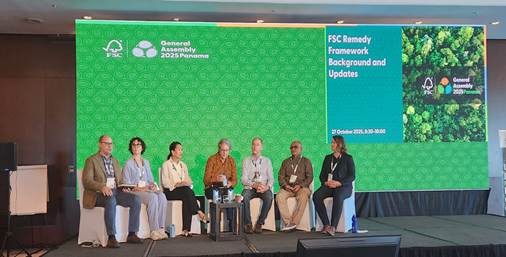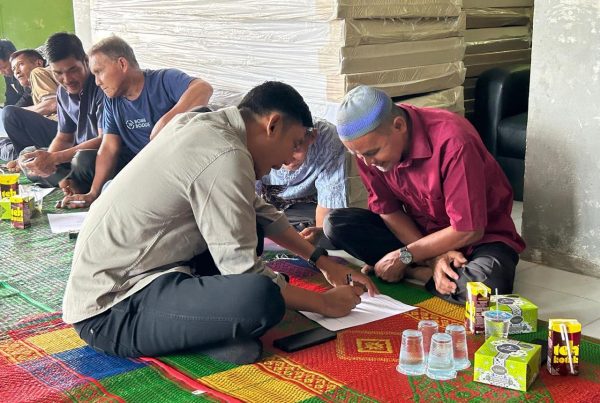In 2010, when PT. RAPP obtained its government concession license for forestry in Pulau Padang, in Riau Province, Sumatra, Bagan Melibur village made known its strong opposition to the company’s presence. Since then, PT. RAPP and the local community have been engaged in dialogue to resolve the community’s concerns over many years and engagement continues. With the first steps in implementing the FSC remedy process now underway, Village Head Isnadi Esman sees it as an opportunity to transform previous opposition into constructive partnership and shared progress.
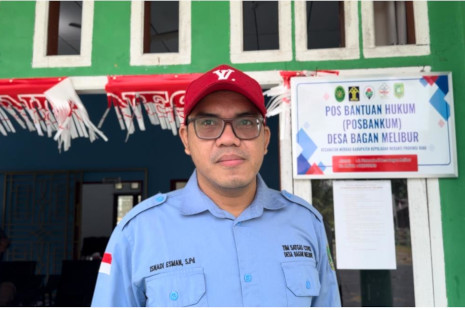
Isnadi Esman, Head of Bagan Melibur Village
Isnadi was inaugurated as the Head of Bagan Melibur Village in October 2019 and played an active role in resolving land disputes between the local community and PT RAPP. Previously, Isnadi was an activist and a member of the Jaringan Masyarakat Gambut Riau (JMGR), a civil society organization advocating for community land rights.
You have been actively participating in the forums related to the FSC Remedy Framework process since 2022. How do you assess the remedy process so far?
First, I view the objective of the remedy process positively. We all hope that this remedy process will serve as a bridge between the community and the company. In the past, several factors contributed to friction, including the company’s presence, the permits for forest use granted by the government, and the community’s existing conditions.
I see the remedy process as a good opportunity. The company wants to make improvements, and the community has long hoped for that, but a meeting point has not yet been found. With this remedy process, we have high hopes that it can be realised and truly achieve its goals, both for the company and the community.
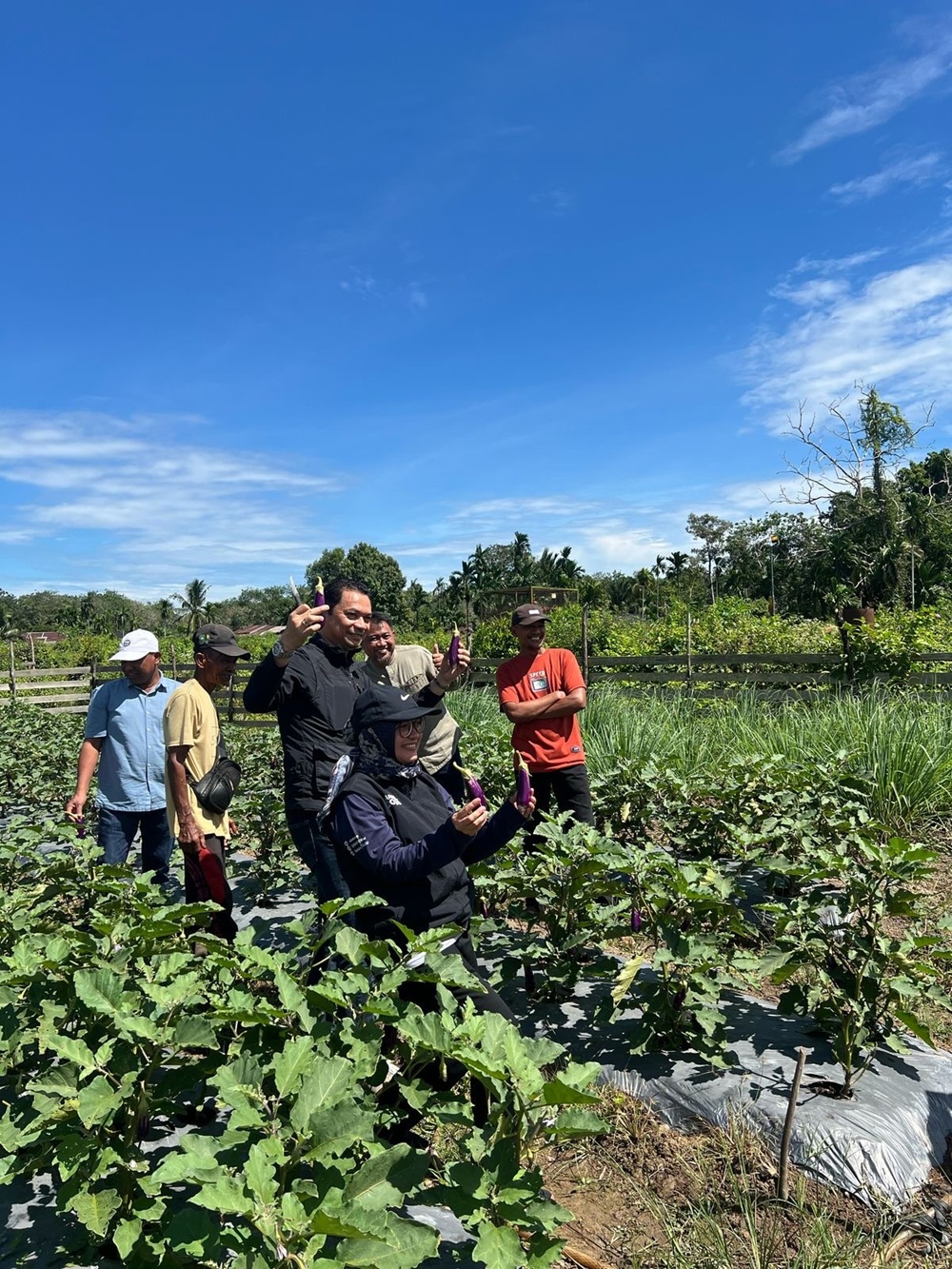
APRIL Community Development Team with Karya Tani Farmer Group from Bagan Melibur Village
In those forums, one of the issues discussed was capacity building and FPIC (Free, Prior, and Informed Consent). How has Bagan Melibur responded to these issues?
For us in Bagan Melibur, we see that the remedy process cannot rely on one party or one perspective. Each party has an important role, whether you are a company, FSC, NGOs, or the government, primarily the village government. The community’s village will be the main subject that will undergo this remedy process. This is where we, the Bagan Melibur villagers, play our role.
In terms of capacity building, we continuously provide understanding to the community. Although the process may not be fully completed yet, we have at least gained an understanding through the community groups, village officials, and community members. Today, our position is more about waiting for when this will actually begin. I think we are quite ready.
So would you say that Bagan Melibur is ready for the remedy process?
I would say that Bagan Melibur is ready. In discussions with the community, we have prepared for the scenario in which the remedy process is fully implemented. We already have several options for what needs to be done and will present them to the company. The point is, we know what should be discussed, whether it is social, environmental, or especially economic aspects. This has been well planned.
What are some of the benefits you expect for Bagan Melibur from the remedy process?
I don’t think that the remedy context should be addressed in a partial way. For example, resolving the conflict between A and B is indeed an obligation when there is a conflict between the company and individual community members. However, beyond that, the remedy process must also contribute to the village’s development.
This means that when the remedy process is implemented, the entire community can benefit. The options must be oriented toward empowerment at the village level. It should not only be partial for individuals or farmer groups but should also strengthen the involvement of the village government. The implementation of the remedy process must be strongly linked to concrete impacts on the community at large.
In your view, what are the community’s expectations of the FSC remedy process?
If we speak in a broader context, waiting for whole communities in all villages to have the same level of understanding or capacity is unrealistic. Each community and village has its own unique dynamics. Their issues, expectations, and capacities are different. I prefer us to start with what is the most feasible, for example through the pilot project. Choose the village that is the most ready. From there, we can learn what needs to be improved and what is already working well
What would meaningful remedy look like for Bagan Melibur?
I think we must be careful to recognise the village’s potential, which is connected to what was once lost due to the company’s presence. For example, the land function, which used to be the community’s economic source, must be restored in both economic and environmental aspects. However, we must also consider the current condition and adjust it accordingly.
Indicators to be considered, among others, are the land ownership, land potential, and existing commodities. In Bagan Melibur, for instance, we have sago as a key potential. Simply put, we are considering how to re-establish a sago field that would be both environmentally sustainable and economically viable in the long term.
However, I must emphasise again that this initiative must involve the village government and the entire community. If we narrow it down to the village level, remedy should contribute to the village’s income, for example, through PADes [village-generated income]. That benefit can be felt by many people, not only by certain individuals or groups.
Looking at the history, how do you see the impact of PT. RAPP’s operations in Bagan Melibur?
Considering the past relationship between the community and PT. RAPP, it may be challenging to repair. However, time passes and dynamics change. Now I see the evolving good relationship between the community and the company, although several issues remain.
Conflicts still exist and take time to resolve. Nevertheless, some positive developments have begun to take shape. At least now, the company is willing to sit together and provide an open space for the community to grow together. That is something positive we need to acknowledge, even though the greater outcomes will still require commitment from both the company and the community.
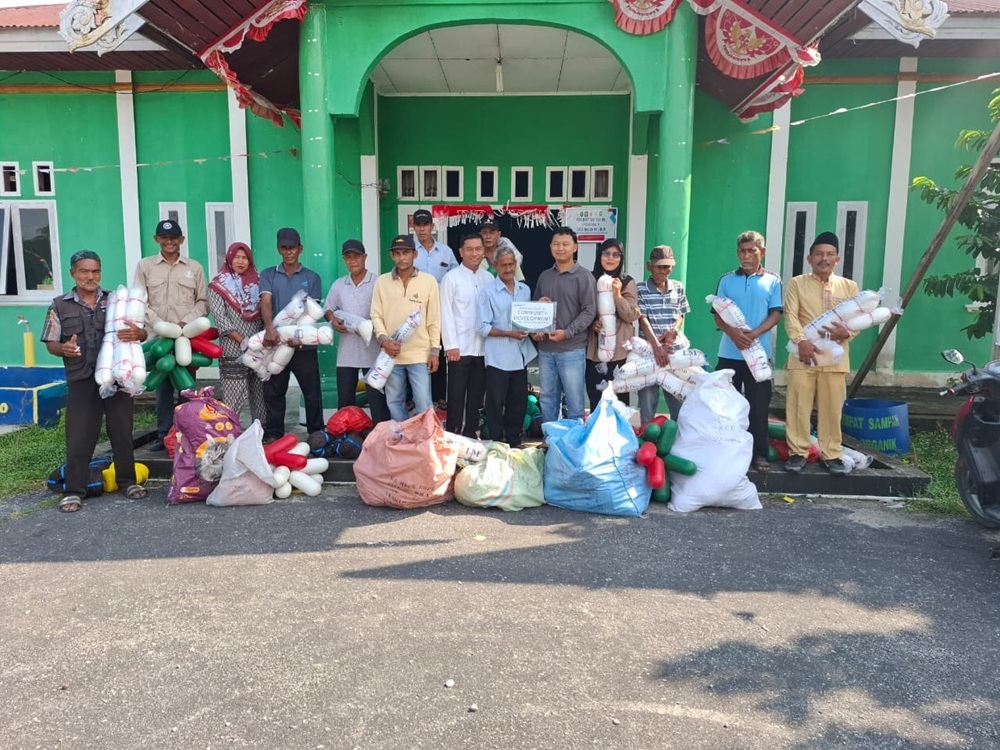
Provision of fishing supplies for the Pedas Bahari Fishermen Group
From that experience, what is the most important lesson you learned from the Bagan Melibur and PT. RAPP interaction?
The most important lesson is that communication must be built. The key point is about providing understanding to the community. Even in terms of the social aspects, when communication is not built well, the results are not good. However, when a difficult situation arises and good communication is established, there is at least room for improvement.
You used to be an activist in Jaringan Masyarakat Gambut Riau (a prominent NGO in Riau), and now you are the Head of the Village. What is the biggest difference you feel personally?
I believe that I can grow and develop alongside the community, particularly the community of my own village, where I was born. In my previous activities, the scope was broader, but now it is more specific in the village. At the very least, I can help facilitate, especially on the issues between the company and the community.
To sum up, what is your hope for the FSC Remedy process in Bagan Melibur?
I hope that this process can move faster. It would not be good if, over the next year, we just sit down and discuss the same things over again without any progress. I hope that by next year, we can already share stories about something that has been started. Even if there are still areas for improvement, at least progress is being made.
In the implementation stage, I hope that the remedy process truly helps build the village and its community. There must be a balance between growth on the company side and growth on the community and village side. Remedy can be the pathway toward that.
How would you assess your village’s readiness to engage in the FSC process?
I think Bagan Melibur is ready. Based on the community’s current level of understanding, participation, and expectations, we are now ready to proceed with the process further. At the very least, we are ready to begin.


